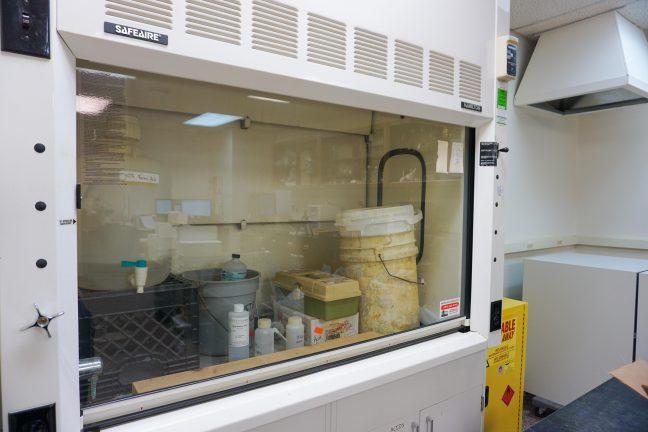When things go wrong, sometimes people tend to overreact. The Yankees missed the playoffs and went out and spent nearly half a billion dollars on three players. My roommate set the record for computer viruses at DoIT — and then went out and bought a $1,700 computer. The U.S. realized other countries had ICBMs and spent ungodly amounts of money developing a missile defense shield that never really worked.
This is kind of the same thing.
It was discovered last month that the DNA of Walter Ellis, a suspected Milwaukee serial killer, did not match the DNA entered into Wisconsin’s database under his name. Then it was discovered that DNA was improperly cataloged for another 12,000 (give or take) felons. That’s about 10 percent of databank samples. Oops.
But hey, at least 70 percent of those felons are still behind bars, so it shouldn’t be too difficult to get their DNA. But that means 30 percent — or about 3,600 of the missing DNA samples — belong to felons who have since been released. Corrections officials have ordered these released felons to report to their local sheriffs to submit DNA for the database, but how effective that will be remains unclear. I can’t really speak for convicted felons, but I know the honor system never really worked in grade school.
This series of events apparently led State Sen. Sheila Harsdorf, R-River Falls, and State Rep. Ann Hraychuck, D-Balsam Lake, to announce plans to introduce legislation mandating the collection of a DNA sample from any person arrested for a felony in Wisconsin.
At first blush, this sounds straight out of “1984,” but really it is more in the vein of 1954. A DNA sample serves the same purpose as a fingerprint. But DNA is more useful than a fingerprint in terms of identifying a suspect since it can be gleaned from multiple sources: hair, blood, semen, etc. If fingerprints have been collected without objection since the era of the Fonz, there can be no objection to DNA samples on the grounds of invasion of privacy, since the two are basically the same.
Furthermore, once (or if) the suspect is exonerated from the alleged crime, they can request to have their DNA removed from the databank if they so choose, just to make sure Big Brother really isn’t watching.
No, the more troubling aspect of this proposal (the actual bill has not been introduced yet) has to do with the “overreaction” effect I mentioned earlier. Like the Yankees, Uncle Sam and my virus-ridden roommate, we have discovered a major flaw in our system and are rushing to the most grandiose solution we can find.
Near as we can tell, the problem isn’t that the samples were never taken, or that some pimply 24-year-old hacked into our database from his mother’s basement in Edmonton. It’s that the sample information was not entered correctly.
This seems to be a simple problem of processing DNA samples. And as such, it may be useful to change how the samples are delivered to the lab. In fact, prison officials are already contemplating delivering samples in person and providing confirmation that samples have been received.
Another way to address the problem could, indeed, as the bill proposes, be to change when DNA is collected. However, the best way to correct a massive backlog of incorrectly entered information is not to flood the system with more information that has to be entered. Really, before we begin to suggest how to fix this problem, we need to figure out what went wrong. Given that many of the errors appear to have occurred when the system was getting started in the early aughts, it looks like this may have just been a couple (thousand) bugs that needed to get worked out of the system.
So instead of buying the biggest, shiniest computer we can find, let’s just get a cheap Dell and steer clear of those porno sites.
Joe Labuz ([email protected]) is a senior majoring in biomedical engineering.







